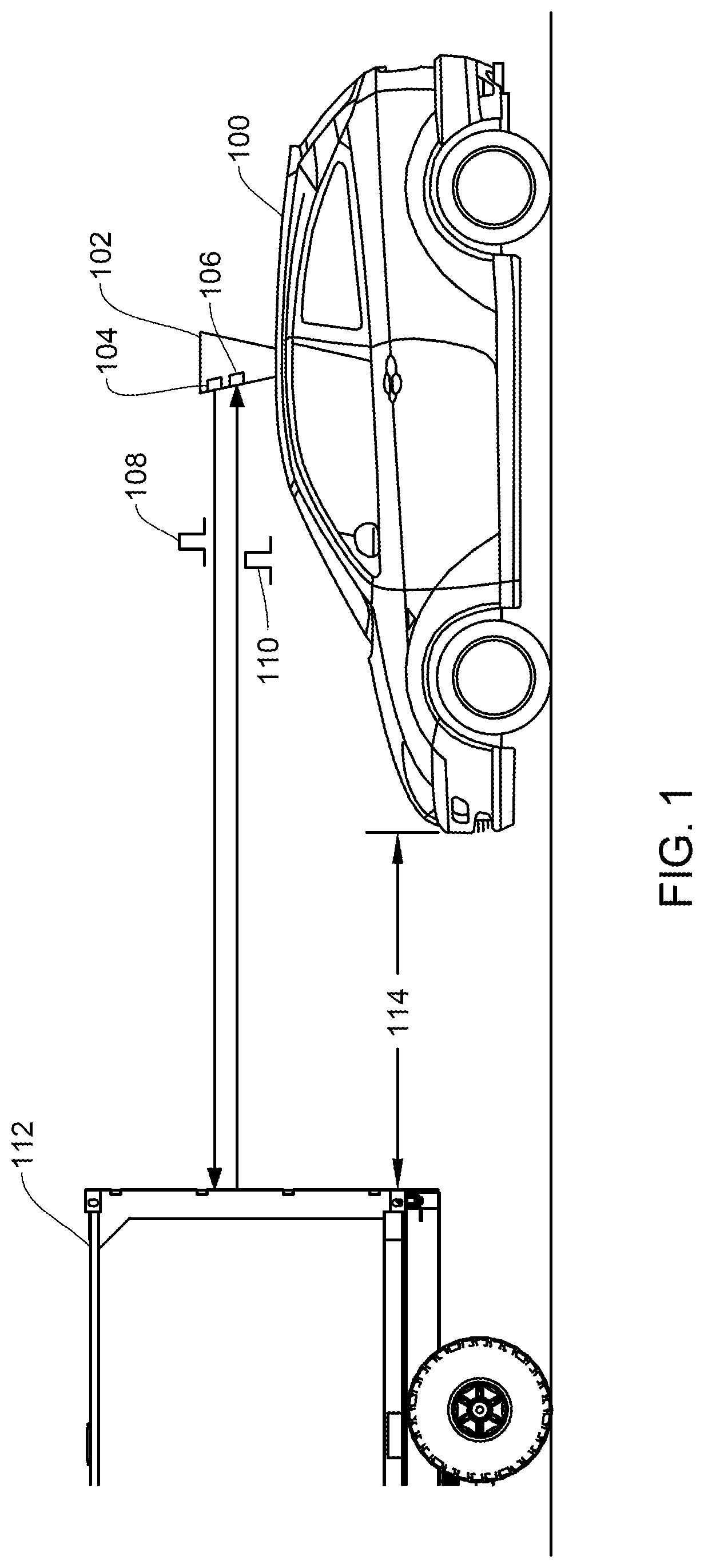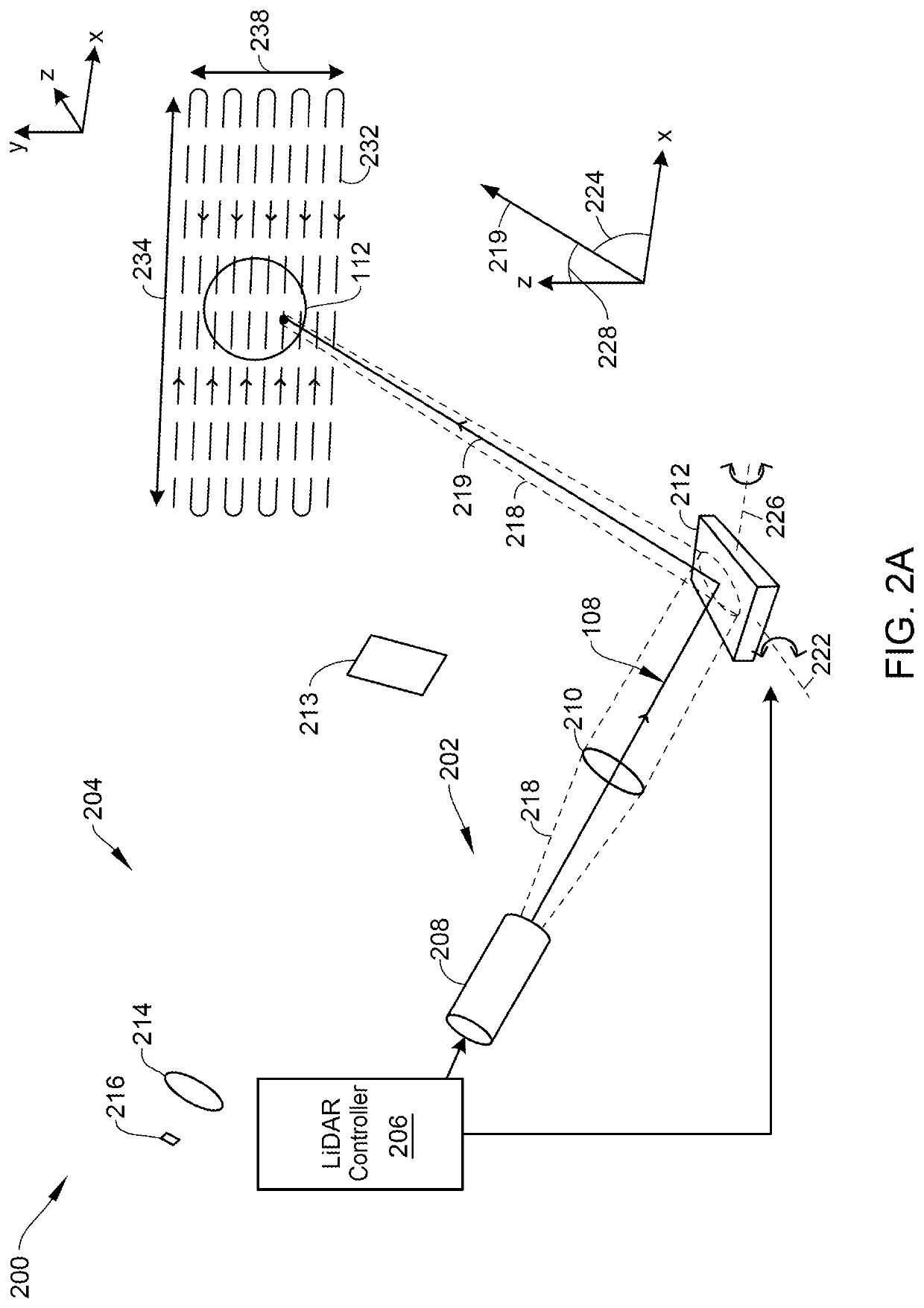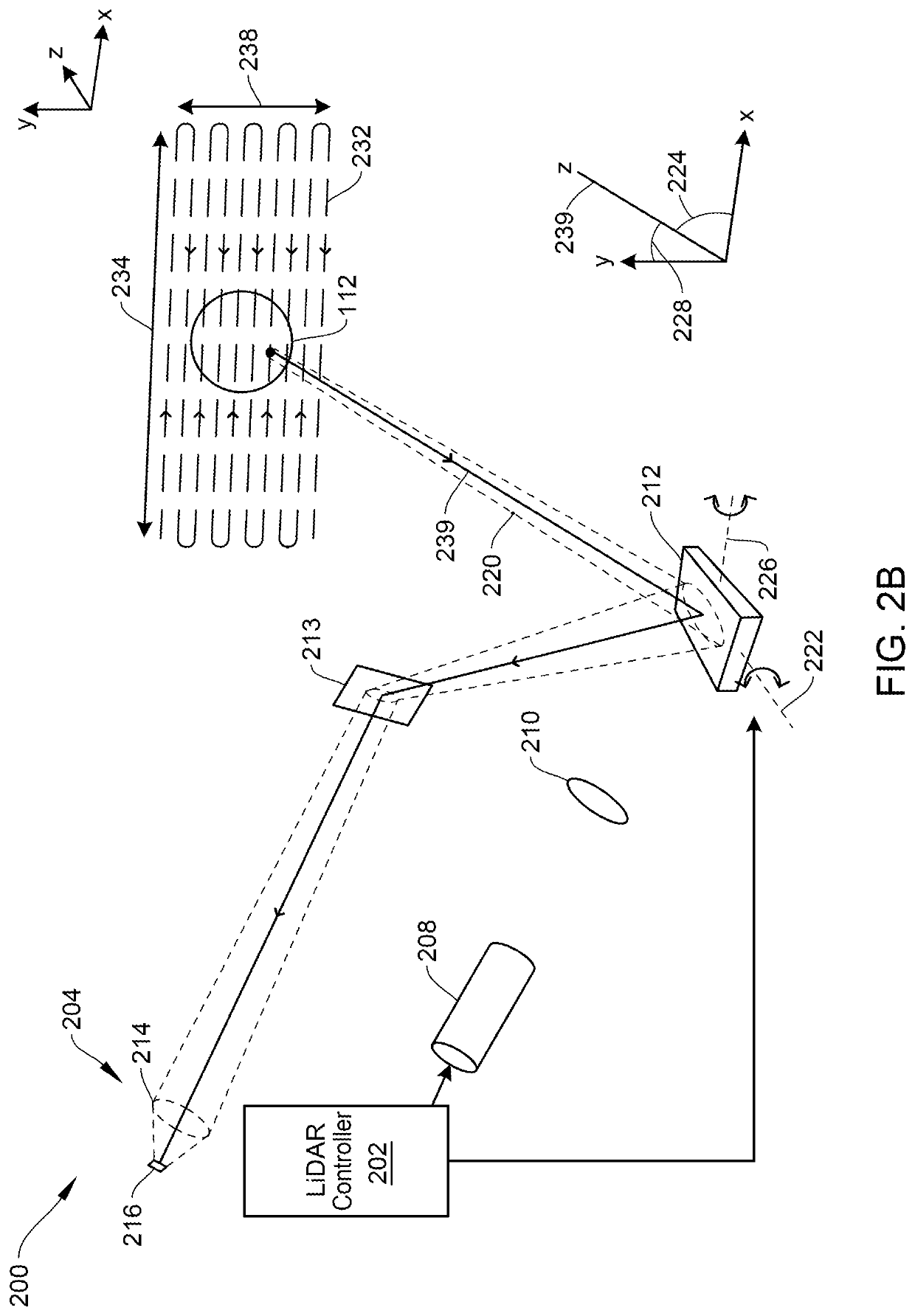Passive thermal management for semiconductor laser based lidar transmitter
a laser based lidar transmitter and passive thermal management technology, applied in semiconductor lasers, instruments, using reradiation, etc., can solve the problems of reducing laser performance (e.g. peak power, wavelength shift, efficiency, etc., to reduce the temperature of the laser diode, minimize parasitic capacitance, and high thermal conductivity
- Summary
- Abstract
- Description
- Claims
- Application Information
AI Technical Summary
Benefits of technology
Problems solved by technology
Method used
Image
Examples
Embodiment Construction
[0028]Aspects of the present disclosure relate generally to a LiDAR system, and more particularly to scanning an environment with a laser having a controlled wavelength.
[0029]In the following description, various examples of passive thermal management of laser structures are described. For purposes of explanation, specific configurations and details are set forth in order to provide a thorough understanding of the embodiments. However, it will be apparent to one skilled in the art that certain embodiments may be practiced or implemented without every detail disclosed. Furthermore, well-known features may be omitted or simplified in order to prevent any obfuscation of the novel features described herein.
[0030]Semiconductor lasers in a LiDAR system are pulsed at high frequencies to scan an environment in a short time. They need to be pulsed at sufficient power to allow the reflected pulses to be detected. The high power and frequencies heat the semiconductor laser, and over time the h...
PUM
| Property | Measurement | Unit |
|---|---|---|
| diameter | aaaaa | aaaaa |
| size | aaaaa | aaaaa |
| size | aaaaa | aaaaa |
Abstract
Description
Claims
Application Information
 Login to View More
Login to View More - R&D
- Intellectual Property
- Life Sciences
- Materials
- Tech Scout
- Unparalleled Data Quality
- Higher Quality Content
- 60% Fewer Hallucinations
Browse by: Latest US Patents, China's latest patents, Technical Efficacy Thesaurus, Application Domain, Technology Topic, Popular Technical Reports.
© 2025 PatSnap. All rights reserved.Legal|Privacy policy|Modern Slavery Act Transparency Statement|Sitemap|About US| Contact US: help@patsnap.com



